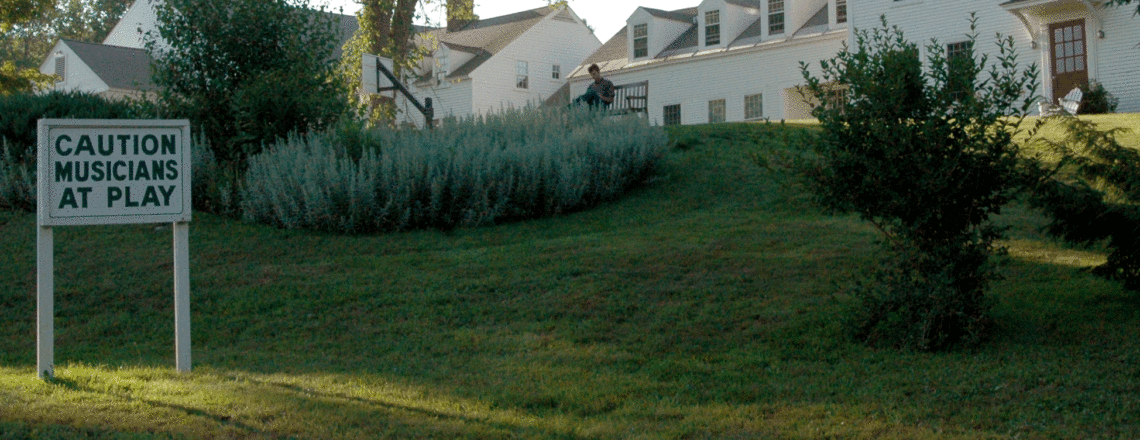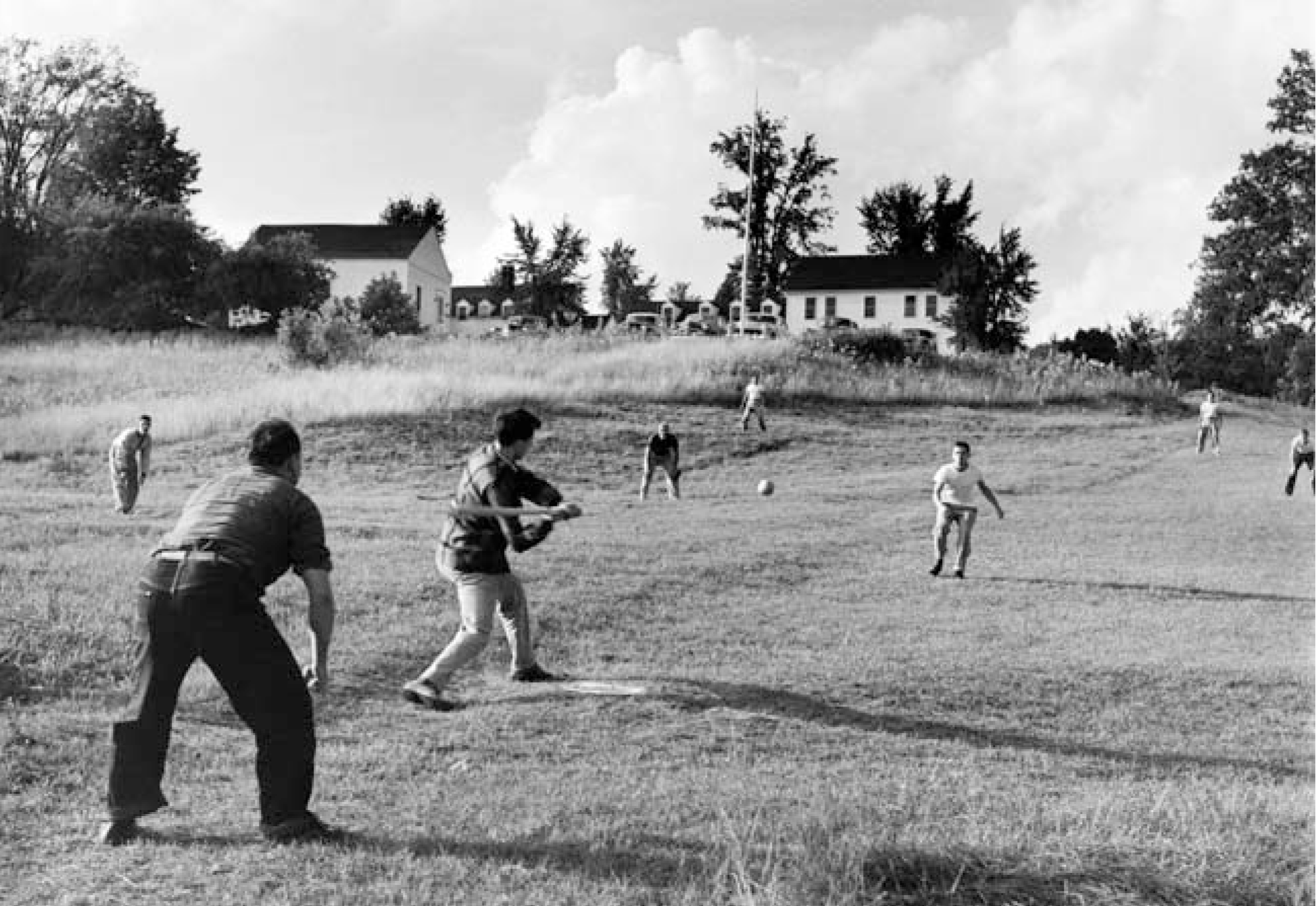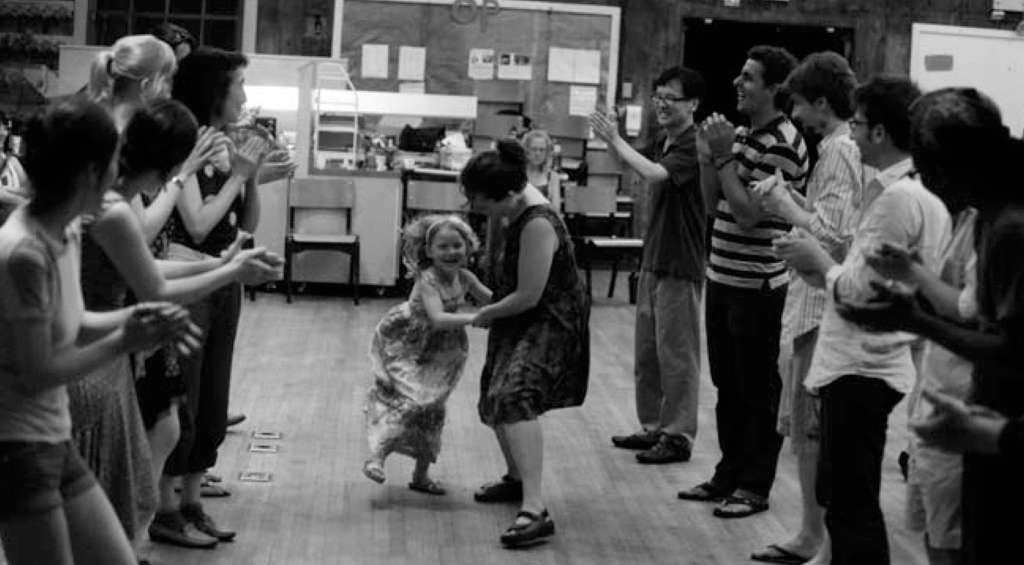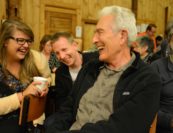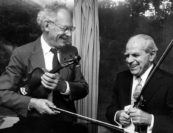A strong family spirit permeates Marlboro and envelopes all who attend. The person at the center of the community for almost five decades was Irene Serkin, who concerned herself deeply with the well-being of all participants. Though sometimes blunt in manner, she had an inner warmth and sensitivity that typically were revealed in her letters and in such gestures as the gift of an exquisite orchid to someone who had suffered a loss.
Among those Ms. Serkin befriended was the Italiani violinist Pina Carmirelli, who championed the music of Boccherini. She arrived at Marlboro in 1964 after her husband’s death and, sustained by the community, remained for two decades. Long-time trustee Paola Saffiotti remembers Carmirelli fondly with these words: “She was a dream of a person and one of my dearest friends.”
Early on, a Marlboro recreation committee was formed; Ninin Bloom, Judy Cohen, Suzanne Galimir, Dorothy Olson, Heidi Palm, Irene Serkin and others spent long hours preparing special events. Among the continued favorites is an international dinner, whereby participants prepare foods from their native countries for communal enjoyment. Many are the tales about who made the best German plum cake, the time Bertha Schoenbach’s Russian cabbage soup spilled over in the car, the fondue prepared by Blanche Moyse which was laced with so much kirsch that guests left inebriated.
There were also swimming parties at South Pond, picnics at the Serkin farm, fresh lobster dinners, visits to the museum in Williamstown, square dances and fine classic films. Early records reveal that in 1952 the Austrian-born pianist Anton Kuerti, now residing in Canada, played the piano score for Sergei Eisenstein’s cinematic masterpiece “Potemkin.” Kuerti was all of fifteen.
The social center at Marlboro has always been the dining hall. It is here that potential barriers break down and participants become acquainted in an easy, informal way. Mitsuko Uchida makes a point of talking with as many musicians as possible. “That way you even learn to know people with whom you haven’t rehearsed,” she says. “I know about many lives because the one I sat next to at lunch or dinner would talk about what they are doing in real life outside Marlboro.”
Not surprisingly, Marlboro music has led to Marlboro marriages, reports Frank Salomon who met his own wife, Martha, here. Long-time Marlboro participants Claude Frank and Lilian Kallir, both renowned pianists, married in the tiny church in town with the Serkins in attendance. They recalled with delight their joint performance of Mozart’s Concerto in E-flat Major for two pianos the year after their wedding. And, in one of Marlboro’s happiest family stories, their violinist daughter Pamela became a participant at age eighteen, playing first violin in Schubert’s C Major Quintet with Felix Galimir, 58 years her senior, as second violin. The two would form a close friendship that lasted until Galimir’s death in 1999.
The tension of music-making for seven weeks brings with it the need for release, and at Marlboro that has often taken the form of pranks. The most enduring is the hurling of rolled-up napkin balls at human targets, no matter how senior. The practice was started by none other than Rudolf Serkin as a token of love from an often-preoccupied father to his young cellist daughter Judith. Once the practice took hold, no one was spared the assault–even Queen Elisabeth from Belgium, a dedicated amateur violinist; she once sat down to dinner shielded from the fray by Leon Fleisher, who held an umbrella over her head.
The list of pranks goes on and on: three feet of popcorn piled up in the manager’s office, frogs smuggled into dormitories in pillowcases, cars pushed from the bottom of campus into a dormitory common room. Of a significantly more elevated nature have been the offerings of Marlboro’s former librarian Shirley Weekly, a French horn player and long-time staff member. Her various and invariably witty literary efforts included a sequel to Schoenberg’s Pierrot Lunaire entitled “Son of Pierrot Lunaire” in which she “sang” the vocal part.

